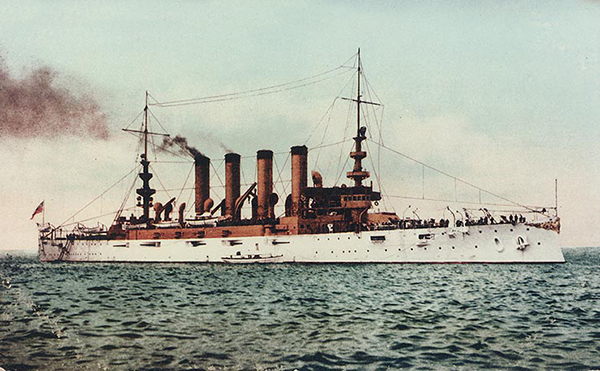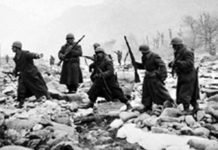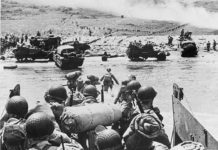Aircraft carriers are gigantic naval warships that project national maritime power because of their global strategic reach and offensive mobility.
Aircraft carriers are gigantic naval warships with a flight deck that support the takeoff and landing of military warplanes. Aircraft carriers are significant warships operated by the navies of the world. Their mission is the operation of aircraft in an ocean environment, which provides air cover to other warships and supports operations ashore where an air base is unavailable. Aircraft carriers are easily recognizable by their large size and distinctive shape, characterized by a continuous flat deck running the length of the ship.
Carriers are a powerful and extremely flexible part of a nation’s defense. A carrier is flexible in a way that armies and air forces are not because it can influence events merely by being observed. The aircraft carrier power can act as a visible deterrent to enemy aggression. Aircraft carriers are flexible because they operate on the ocean.
Unlike many land airbases, no other nation has to be communicated with concerning where aircraft carriers can travel and what they can be employed for because most of the ocean is considered international water and not part of any country’s territory. This liberty permits aircraft carriers to move toward troubled targets to execute combat operations.
Aircraft carriers operate with a number of support and supply ships; this flotilla of ships is referred to as a carrier battle group. A carrier battle group includes other warships, such as destroyers, frigates, and submarines, to protect and escort the aircraft carrier.
Since the Second World War (1939-1945), warplane carriers have primarily been used to influence world events and to support troops ashore. When the Korean War (1950-1953) broke out in June 1950, United States Navy carriers were the only military airpower immediately available to engage the enemy. U.S. Air Force units were unable to respond for several months. Aircraft carriers were also the first American units to arrive on the scene during the Vietnam War (1959-1975) the Persian Gulf War (1990-1991), the Iraq War (2003).
Aircraft Carriers Types
There are two main types of aircraft carriers: those that operate conventional aircraft, such as the large U.S. ships, and smaller, light carriers that operate helicopters and vertical takeoff and landing aircraft. The main difference is in size and firepower. A conventional carrier is quite large, and bears the designation CV or CVN. The C stands for carrier; V is the military designation for aircraft; and the N signifies a carrier with nuclear propulsion system.
The American Nimitz class nuclear powered carrier is 335 meters long, 77 meters wide, weighs 83,000,000 kilograms, and has a crew of 6000 navy personnel. They can handle over 80 high-performance aircraft. While these warships are immensely valuable to a nation’s defense, not all nations can afford such a military vessel to operate warplanes in the ocean. Many countries use much smaller “light” carriers, which range from 150 to 210 meters long, weigh 10,000,000 to 15,400,000 kilograms, and handle about 15 to 25 warplanes.
The combat aircraft on light carriers are usually anti-submarine warfare helicopters dedicated to hunting and destroying enemy submarines. Light carries also transport about 5 to 10 warplanes, such as the AV-8B Harrier aircraft, which have vertical take off and landing capability.
Aircraft Carrier History
The first aircraft carriers were converted cruisers with simple wooden flight decks. The first landing of a plane on a ship was made by Eugene Ely in 1911, when he landed on a platform built on the cruiser Pennsylvania The first aircraft carriers, such as the British ship Furious, were originally cruisers that were converted to carriers by building wooden platforms over the ship’s deck to accommodate airplanes.
he British ship Argus had a flush flight deck similar to modern decks, but was completed in 1918 and was too late to enter the war Britain has always been a leading innovator in aircraft carrier design, and had three true carriers in operation as early as 1921. British engineers invented the angled flight decks, steam catapults, and landing systems in use aboard American carriers today. The first American carrier was the Langley, at 150 meters in length and weighing 20,000,000 kilograms.
In the beginning, carriers were seen as nothing more than useful scouting platforms for the armored battleships that were the leading warships of the day. Carriers surpassed battleships in importance as naval weapons during the Second World War. The primary reason for this was range: A battleship’s guns can only strike targets out to about 37 kilograms, but a carrier’s aircraft can strike enemy forces over 480 kilograms away. The flexibility of the carrier and its aircraft rendered battleships obsolete and during World War II, battleships were used only as gunfire support ships.
Second World War Aircraft Carriers
During the Second World War, the United States built a fleet of 100 carriers to defeat the German and Japanese fleets. In the Atlantic Ocean, carriers were used to sink German submarines and provide air cover to merchant ship convoys carrying supplies to the war in Europe.
In the Pacific Ocean, American carriers fought Japanese carriers in large battles such as the Battle of the Coral Sea, the Battle of Midway, and the Battle of the Philippine Sea. American carriers also provided air support for ground forces during many island invasions against the Japanese. The Japanese carrier fleet was destroyed during World War II, leaving the United States and Britain as the only major operators of aircraft carriers at that time.
Modern Aircraft Carriers
Current aircraft carrier development is primarily concentrated in the United States, but even the United States is finding conventional carriers to be an expensive ship type to operate. Governments are focusing on reducing the building and operating costs of carriers. Cost reductions include reducing the size of the crew, automating various operational functions, and reducing the high maintenance requirements of the ship. When the last Nimitz class carrier is completed in 2006, the United States is planning to build a new class of carriers that will reflect the current efforts to reduce costs.
Sources:
- Aircraft Carriers; C.A. Mobley and Michael Benson; 2003.








